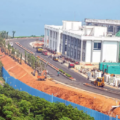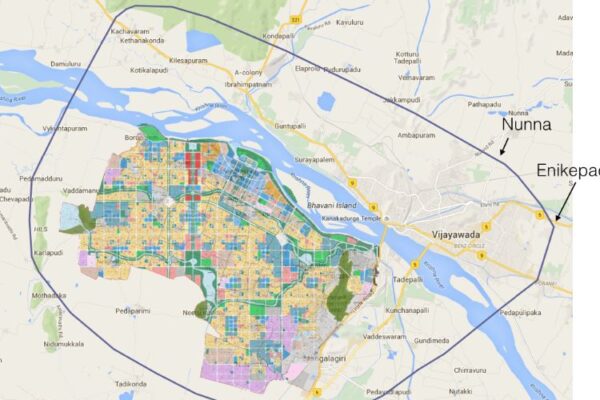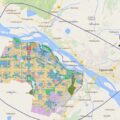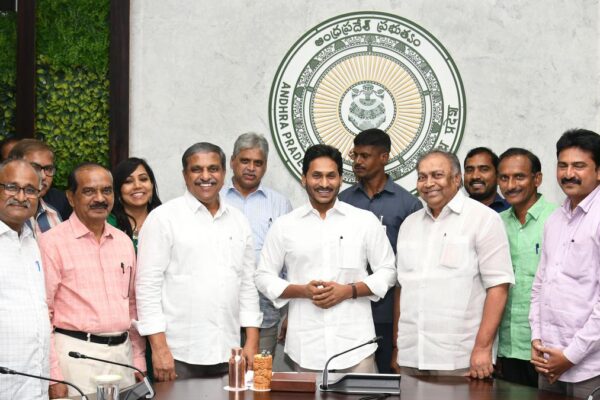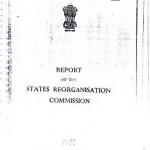 1.1.10 There had been a strong sentiment for the unified Telugu-speaking state for a long time, and more so, since the time the national leadership had agreed in principle on formation of Andhra state in 1946. Towards this end, an organization called Vishalandhra Mahasabha was formed in 1949 by the leaders of Andhra area. This also had the support of a sizeable section of Telugu- speaking people of the Hyderabad state. In fact, the idea of Vishalandhra had originated in Circar districts as early as in 1937. The Andhra Congress Swarajya Party aimed at formation of Andhra province for all Telugu areas, including Telangana. The Working Committee of Andhra Mahasabha, in October, 1942, had resolved in favour of Vishalandhra. The advent of Independence and accession of Hyderabad to the Indian Union in 1948 gave an impetus to the demand of Vishalandhra.
1.1.10 There had been a strong sentiment for the unified Telugu-speaking state for a long time, and more so, since the time the national leadership had agreed in principle on formation of Andhra state in 1946. Towards this end, an organization called Vishalandhra Mahasabha was formed in 1949 by the leaders of Andhra area. This also had the support of a sizeable section of Telugu- speaking people of the Hyderabad state. In fact, the idea of Vishalandhra had originated in Circar districts as early as in 1937. The Andhra Congress Swarajya Party aimed at formation of Andhra province for all Telugu areas, including Telangana. The Working Committee of Andhra Mahasabha, in October, 1942, had resolved in favour of Vishalandhra. The advent of Independence and accession of Hyderabad to the Indian Union in 1948 gave an impetus to the demand of Vishalandhra.
Shri A. Kaleswara Rao (who later became the Speaker of Andhra Pradesh Assembly) formed the Vishalandhra Mahasabha in November 1949, ten days after the Congress Working Committee recommended steps for formation of an Andhra Province. The Standing Committee of Vishalandhra Mahasabha met at Warangal in February 1950 and demanded the immediate formation of a separate Andhra state, the disintegration of Hyderabad state and the constitution of Vishalandhra state with Hyderabad as capital. About a month later, the Hyderabad State Congress unanimously demanded the disintegration of Hyderabad and merger of three areas, namely, Telangana, Marathwada and Karnataka in the adjoining linguistic provinces.
These efforts were intensified in 1953 with the decision of the Government of India on the formation of Andhra state. Notwithstanding the same, there was also a counter-sentiment in the Telugu-speaking areas of Hyderabad state for retaining their independent identity. During this period, Pt. Nehru had also initially spoken in favour of retaining a separate state of Hyderabad and this encouraged the protagonists of independent Telugu-speaking Hyderabad state to intensify their efforts for this cause. Accordingly, SRC became a platform, for both the opponents and the supporters of unification, for submitting their respective viewpoints, which was done very effectively. It is believed that, this is why the SRC could not decide the status of Hyderabad, one way or the other. The SRC report, simultaneously favouring the separate residuary Hyderabad state as well as mentioning unification, led to intensive lobbying by both the groups and both continued with their efforts to achieve their respective goals.
In the context of submitting a Memorandum to SRC, the Hyderabad Pradesh Congress Committee under the Presidentship of K.V. Ranga Reddy (who was for separate Telugu state of Hyderabad) resolved in early 1954, that the future of the three linguistic regions should be decided by the Congress delegates of Telangana, Marathwada and Karnataka in separate meetings which were to be held in June, 1954. Of the Telangana delegates numbering 107, only 50 attended the meeting arranged on June 7, 1954. At the time of voting the next day, only 44 were present. K.V. Ranga Reddy himself did not attend. Dr. M. Chenna Reddy, a Minister in the Hyderabad Government (who was also for separate Telugu State of Hyderabad), moved a resolution recommending the formation of two Telugu states, which was carried by 31 votes to 13. The 13 delegates who opposed, urged the PCC President that the Resolution should not be considered representative of the Telangana opinion. The Hyderabad PCC executive felt that the integrity of Telangana should be preserved in one Telugu state. The Telangana state, as finally demanded, was to consist of the Telangana districts and some Telugu speaking parts in the Marathwada and Karnataka districts and some portion of the Bhadrachalam Taluk of the East Godavari district.
However, at the Chief Ministers‟ conference on October 22, 1955, Andhra and Hyderabad Chief Ministers suggested immediate merger of Telangana and Andhra instead of waiting for five years as proposed by the SRC. In this situation, the Hyderabad Assembly discussed an official resolution on SRC Report from November 25 to December 3, 1955. The trend of the debate was that, out of the 174 members of the House barring the Speaker, who participated in the discussion, 147 members expressed their views. Of these, 103 favoured Vishalandhra, 29 favoured independent Hyderabad state and 15 remained neutral. From the residuary states, 59 wanted Vishalandhra, 25 separate Hyderabad state and 1 was neutral.



